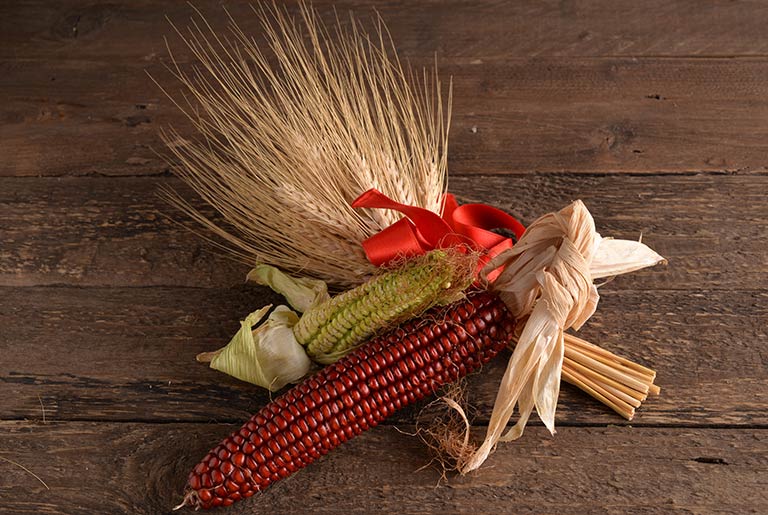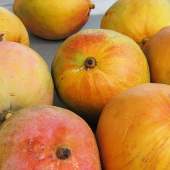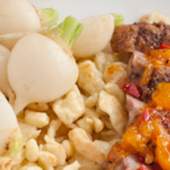Popcorn

It’s an inexpensive snack food! It’s low-fat, cholesterol-free, protein-rich, and high in fiber! It’s also used in wearable fashion and home décor! What is it?
Popcorn, of course…the official state snack of Illinois.
October, in case you didn’t know, is National Popcorn Poppin’ Month, and celebrates a dietary mainstay that has been around for at least 4,000 years, and is the oldest known variety of corn, or maize. When Spanish conquistador Hernán Cortes invaded Mexico in 1519, he observed the Aztec Indians incorporating “burst” corn (momochitl) in ceremonies honoring their god of rain and fertility, Tlaloc. This “parched” corn that resembled flowers was used in women’s headdresses, jewelry, and as decorative garlands on statues. A century or so later in South America, it was called “pisancalla,” and it was consumed like candy.
When did it arrive in North America? No one is certain, but we do know that in 1948, some small ears of popcorn and several unpopped kernels were found by two Harvard graduate students, botanist Earle Smith and anthropologist Herbert Dick, mixed in with two millennia worth of garbage in Bat Cave (its real name!) in west central New Mexico. These popcorn specimens were dated, as near as anyone can tell, from about 5,600 years ago. Curious to learn whether these ancient kernels would still pop, Smith and Dick dropped them into hot oil…and they did! (No word on how they tasted, if they had the courage to try them.)
Later, long before corn flakes came along, popcorn was a popular breakfast food, eaten just as we enjoy breakfast cereal today, sometimes ground with a little milk or cream. (Popcorn is a whole grain, after all.) In the late nineteenth and early twentieth centuries, popcorn balls (and presumably, garlands) began to be used as a holiday decoration and were also a coveted gift.
The introduction of popcorn as a movie snack probably came about because of a Chicago innovation: the first commercial popcorn machine, which was invented in the late 1800s and was also, ingeniously, mobile. Popcorn vendors would traverse the streets looking for crowds, and they generally found them congregated outside something else that was new that year: movie theatres. So audiences began to associate popcorn with movies, and any noise they made while eating it was not a problem in that silent era. In 1912, the first popcorn was sold inside the movie theatre (which is probably when overpriced concessions began as well).
Because popcorn was so economical, in hard times such as the Great Depression it was a luxury that almost anyone could afford. And during World War II, when sugar was rationed and candy was scarce, popcorn filled the bill quite nicely, and sales of it across U.S. tripled. The 1946 invention of the microwave by American electronics expert Perry Spencer meant that it would only be a matter of time before someone figured out that you could mass-produce popcorn to be popped in it. By 1981, microwave popcorn had been introduced to the public, and today, it is the number one item made in a microwave. Who sells more microwave popcorn than anyone else? Orville Redenbacher, of course!
And that irresistible treat, caramel corn? One of the earliest sightings of it was at the Chicago World’s Fair in 1893, as the prime ingredient in Cracker Jack, a product that still generates sales of more than 200 million boxes annually.
Some other fun stats:
- How much popcorn is consumed in America each year? 14 billion quarts, or 43 quarts per person (even infants, whom we’re pretty sure can’t eat popcorn). For a visual, this amount would fill the Empire State Building 18 times. Or, if you made a popcorn trail between New York and Los Angeles, it would require about 350 million popped kernels. (Or more, if you eat some of them, as you probably would.)
- A cup of air-popped popcorn contains only 30 calories; the oil-popped variety has 35. So you can splurge. By the way, each quart of popped popcorn contains about two tablespoons of kernels.
- The average popping kernel can reach an altitude of three feet. Good to know if you forget to put the lid on the popper.
- Not surprisingly, the vast majority of popcorn is grown in the Midwest; top producers are Nebraska (250 million pounds annually), Illinois, Indiana, Iowa, Ohio, Missouri, and Kentucky.
- The world’s biggest popcorn ball, according to the Guinness Book of World Records, could be found at the Indiana State Fair in 2013 — it was eight feet in diameter and weighed more than 6,500 pounds. It was composed of 2,000 pounds of corn, 400 gallons of water, 40,000 pounds of sugar, and 280 gallons of corn syrup.
- About 70 percent of all popcorn is made and eaten at home; the rest is purchased at cinemas, sporting events, etc. The most popular season for popcorn consumption: autumn.
- Contrary to popular belief, popcorn was NOT on the menu at the first Thanksgiving dinner. Maybe the Indians were saving that for themselves.
- In the “something you’ve always wondered about” department — those unpopped kernels in the bottom of the bowl are commonly known as “old maids” or “spinsters.” Remember that, the next time you break a tooth on one of them.
If your garden variety caramel or cheese popcorn isn’t your thing, try one of these flavors: Soy sauce, lemon sherbet, curry, caffeine, gin & tonic, mince pie, coconut, cheeseburger, pear, eggnog, taco, or marmite. Or pumpkin spice, because it’s fall and that’s a requirement. Right?





